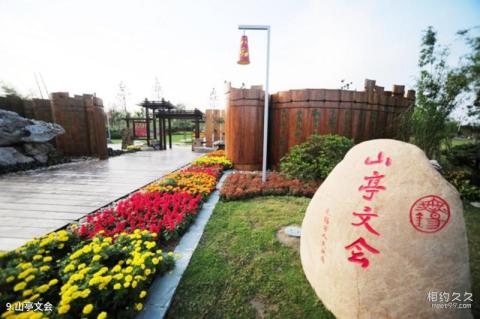
Introduction to Shanting Wenhui: "Shanting Wenhui" is taken from the representative work of Wang Fu, a famous Wuxi painter in the Ming Dynasty. It combines the advantages of the blending of landscapes and uses modern techniques to create a grand event of an elegant gathering in the mountains and forests in the painting. The exhibition garden is surrounded by mountains and pavilions are the scenery. The Wenhui Pavilion located at the highest point of the exhibition garden is undoubtedly the focus of the entire exhibition garden. The name of the pavilion means to bring friends together through writing, and it can accommodate small gatherings of three or five friends. The Wenhui Pavilion has a simple appearance, simplifying the traditional Chinese architectural structure - brackets, retaining the traditional form as decoration, and using modern materials to reflect it. The top of the pavilion cleverly uses sunlight to reflect the words on the glass ceiling to the ground, embodying the theme of "Wenhui" from both connotation and form; the pavilion's ceiling adopts a cascading form, which not only adds layers vertically, but also adds layers to the interior of the pavilion. Installing lights will give Wenhui Pavilion a unique view at night. In addition to the glass ceiling with text written on the Wenhui Pavilion, there are also several seal sculptures in the exhibition garden. The seal form commonly used in ancient times is combined with modern materials such as cast iron and granite to perfectly integrate traditional culture and modern style.
